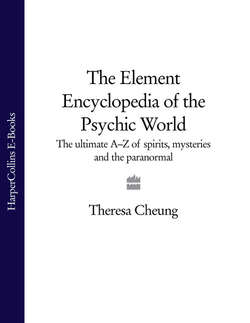Читать книгу The Element Encyclopedia of the Psychic World: The Ultimate A–Z of Spirits, Mysteries and the Paranormal - Theresa Cheung, Theresa Cheung - Страница 122
BOND, FREDERICK BLIGH [1864-1945]
ОглавлениеBorn in Wiltshire, England, in 1864, Frederick Bligh Bond became a well-known author, editor, architect and archaeologist. Considered to be the pioneer of ‘psychic questing’, he was regarded as exceptionally talented but ‘irascible, eccentric, difficult to work with, moody and confrontational’ by his colleagues. He had a deep interest in all things psychic, occult and esoteric, and his work involved analysing medieval woodwork and construction techniques.
In 1908 Bond was commissioned to excavate the ruins of Glastonbury Abbey, burial place of three kings of England and reputed to have connections to the legendary King Arthur and the Holy Grail. It was while working on this project that Bond claimed to have been in communication with spirit monks, called the Watchers, who once had lived at Glastonbury. The Watchers established regular communications with Bond and allegedly penned messages to Bond in a curious mixture of Old English and rudimentary Latin, giving clues to the hidden history of Glastonbury Abbey and insights into the building’s original design and architecture. In all, these communications gave a startling insight into everyday life within the abbey and a glimpse back into the medieval world.
Bond’s claim to have psychic guidance from spirits drew sharp criticism from his conventional colleagues in both the fields of archaeology and architecture. But his communications with the ghostly monks won him the support of members of the British Society for Psychical Research. In 1918 he published The Gate of Remembrance, a collection of transcripts and reports from his automatic writing sessions, and it sealed his fate by firmly undermining his reputation as a professional once and for all. However, Bond’s enthusiasm for his interaction with the ghosts of Glastonbury Abbey prompted him to follow up his book with The Hill of Vision, in which he revealed allegedly prophetic warnings given to him by the spectral monks, including a prediction of World War I.
Despite great success in locating unknown and little-known structures, Bond was gradually pushed out of his work at Glastonbury. It would be easy to say that this was due to his psychic work, but it may simply have had to do with the fact that he was vain and arrogant and made a lot of enemies along the way. He was an amateur archaeologist at a time when the field was professionalized, and his refusal to follow a systematic plan of excavations laid down by professionals was bound to create tension. By 1921 he was reduced to cleaning the artefacts he had found, and by 1922 he was asked to leave Glastonbury.
In 1926 Bond took up an offer from a wealthy American to pay for his passage to the US. He found work as an architect and began a successful lecture tour organized by the American Society for Psychical Research. In 1935, again at his patron’s expense, he returned to England jobless, penniless and homeless. He died in a cottage in Wales in 1945 at the age of 82. Throughout his life Bond never lost his love for Glastonbury or his fascination for the paranormal, but many of the suggestions given by the Watchers have never been followed up, and to this day his books are banned from the Glastonbury Abbey bookstore.
